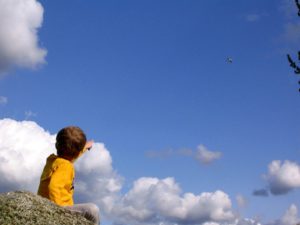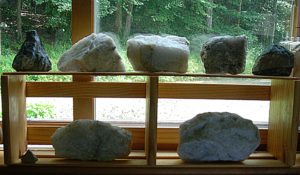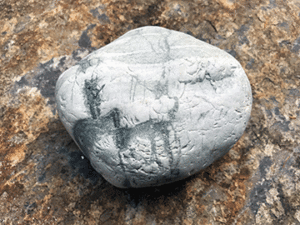David's Desk is my opportunity to share thoughts and tools for the spiritual journey. These letters are my personal insights and opinions and do not necessarily reflect the sentiments or thoughts of any other person in Lorian or of Lorian as a whole. If you wish to share this letter with others, please feel free to do so; however, the material is ©2018 by David Spangler. If you no longer wish to receive these letters, please let us know at info@Lorian.org.
DAVID’S DESK #130 - HEARTLAND SECURITY
Four years ago, one of my “subtle” (i.e. non-physical) colleagues said to me, “You are at war, but you don’t fully realize it yet.” His comment has been borne out by recent events detailing the extent to which Russian hackers and “bots” are utilizing social media in the United States to exacerbate existing tensions and divisions through the spread of misinformation. Nor is it just the Russians. ISIL has been using websites and Internet propaganda to radicalize individuals towards participating in their brutal form of violent jihad. Not to be left out, various hate groups in the United States and other Western democracies have been doing the same, all using the instant availability and openness of social media networks to advance their agendas. These are just the organized groups. We are also beset by uncounted numbers of individual “trolls” who take advantage of digital anonymity to spread negativity and conflict.
If invading enemy tanks were rumbling up the streets of New York or San Francisco—or London, or Paris— the threat would be obvious. We would know what to do and how to respond. We’ve done it before, as when the Japanese attacked Pearl Harbor. Physical combat we understand.
But this war is different. It is a war being waged in the imagination, in the mind, and in the emotions. It is an “info-war” that is harder to spot, harder to define, harder to know just when we are being invaded, particularly because it enlists our own prejudices, our own fears, against us. Weaponized misinformation is challenging to defend against because it touches us in our beliefs: it invites us to accept and believe what we want to believe, whether it’s true our not. It uses confirmation bias as its ammunition. We feel affirmed in our worldview (whatever its limits), which makes us willing colluders with the very forces that wish to tear us apart.
What is even more subtle and dangerous, though, is how this war masquerades itself. Different as it may be from past physical conflicts, we still see it through a familiar lens as one human group versus another It is the Russians against the United States, ISIL against the non-Islamic world, hate groups against people of races, ethnicities, and religions different from their own. The methods of attack and defense may be new but the adversarial narrative is not.
This war, though, is really an attack upon the human heart and its ability, in each of us, to craft a positive, planetary future. It is an attack upon our ability to walk beyond fear and to connect with each other. It is an attack upon our ability to love and to see ourselves in the other. It is an attack upon our ability to grow and expand and give expression to what President Abraham Lincoln so aptly called the “better angels of our nature.”
It is an attack upon a larger, wider, deeper knowledge of who we are as human beings. It is an attack upon our ability to cooperate, collaborate, and co-create a positive future for all of us and for the world as well, upon which our lives depend.
Success in this attack depends on us not seeing that in this conflict, Russian hackers, ISIL jihadists, members of hate groups, and individual trolls are targets as well. Their hearts are being crushed, too, their humanity limited. But if they are not the deeper perpetrators of this war, who or what is?
In one sense, we are all under attack from old habits; ways of thinking and feeling that are outmoded in a planetary, digital Age; the pain of old wounds that have festered in the collective unconscious but are now finding release; suppressed animosities given new opportunities to express themselves; the karma of humanity’s suffering. In this context, perhaps the cartoonist Walt Kelly said it best on Earth Day, 1971, when he had his character Pogo say, “We have met the enemy, and he is us!”
There is another force at work, though, which I choose to characterize as fear of the unknown. Few people like change. This is true even when it's obviously beneficial; it’s even more true when the consequences of change cannot be wholly foreseen and may involve loss of some kind. Change isn’t safe. It’s scary.
There is no question in my mind that right now we all stand as human beings at a tipping point. There are too many things happening in the world and to the world for life to stay the same as it’s always been. The choice we face is not whether or not to change but whether we will fear and resist or whether we will rise to the occasion and bring something new into being.
The war raging around us is a war over this choice.
Never before in human history have we had so many tools and so much power to bring us together as a planetary species in harmony with the world. We have access to modes of travel, communication, and cooperation that would have seemed godlike and magical only a couple of centuries ago.
At the same time, never have we been so faced with the tools and power to cripple, perhaps even to end, life as we know it. This need not be through physical destruction and annihilation. It can be through a retreat into ever-shrinking armed camps, buttressed by having only the information we wish to have, true or not, and defended by walls of thought, feeling, and action that keep away anything that is different, anything that might challenge our tiny status quo. We don’t have to kill ourselves to kill off the largeness and promise of our spirit.
This is the real war that surrounds us, whatever conflicts appear on the nightly news. It is fear of expansiveness, fear of change, fear of openness, fear of love, fear of difference, fear of cooperation aligning itself against the promise of the human spirit.
It is an attack upon the spiritual heart—the human heart—of who we are.
It calls for us to rise to participate in “heartland” security, to protect the largeness of heart that is potential in all of us and to give it opportunity to grow, expand, and express.
Ironically, this is the easiest of all wars to fight. We do not have to bear arms, we do not have to dress in uniforms, we do not have to accumulate around us the armaments of war. What we do need to do is refuse to let our hearts and minds be shrunk. We must refuse to collude with fear and hate. If someone unknown on the Internet tells me to fear another American, I can respond by saying, “All Americans are my sisters and brothers. We may have different beliefs, but we are united as Americans.” If someone unknown on the Internet tells me to fear another race, another nationality, another religion, I can respond with a loving heart and say, “No! All humans are my sisters and brothers. The future rises or falls on our ability to stand together in mutual respect that can see beyond our differences.”
In other words, we can imagine ourselves as being larger than our prejudices, larger than our fears, larger than the ideas that would limit and bind us in ever-smaller communities of bias. This is a war of imagination. Imagination powered by love is our greatest means of winning it.
When we stand in our Heartland and the love it can hold, then all the world becomes our Homeland, and all life our fellow citizens.
This is a war we must win. This is a war we can win. It just takes knowing who we can be, who we all can be together, and letting that truth dispel the misinformation that would tell us otherwise.
From March 1-28, join David Spangler for Subtle Energies I: Standing Whole. In this four-week class, David will guide participants as they explore the subtle sides of their natures. Understanding this aspect of yourself and learning to integrate its capacities in daily life is a key to being whole. Class will be held on our online educational website, Lorian Education, where materials can be accessed 24/7. Additionally, David will host five live webinars that participants can also download for their personal use. For more information and to register, click here.
David Spangler is a guest contributor to Earth Rising: Our Sacred Destiny To Heal Ourselves and Uplift Our World, Together with David Nicol, beginning March 1. For more information, click here.














 During my apprenticeship to a shaman, I learned how to journey into the non-ordinary reality of the lower, middle, and upper worlds where I met with power animals, nature spirits, deities, and all manner of beings for which I had no name. My first attempts were tentative yet soon enough I was surprised by some very real alternate realities. When going to the upper world for the first time, I expected to see ethereal castles and cloud cities. I thought I’d meet austerely other-worldly teachers. Instead, I wandered as though in a fog and began to worry that I would fail to see anything. Suddenly, I found myself in the presence of an old crone of a woman with wild hair and wilder eyes. I appeared to have startled her. She turned from something she was working on, took one look at me, and yelled in consternation “Go talk to
During my apprenticeship to a shaman, I learned how to journey into the non-ordinary reality of the lower, middle, and upper worlds where I met with power animals, nature spirits, deities, and all manner of beings for which I had no name. My first attempts were tentative yet soon enough I was surprised by some very real alternate realities. When going to the upper world for the first time, I expected to see ethereal castles and cloud cities. I thought I’d meet austerely other-worldly teachers. Instead, I wandered as though in a fog and began to worry that I would fail to see anything. Suddenly, I found myself in the presence of an old crone of a woman with wild hair and wilder eyes. I appeared to have startled her. She turned from something she was working on, took one look at me, and yelled in consternation “Go talk to  Here on Whidbey Island, I go for walks in a Buddhist nature reserve known as the Earth Sanctuary where they have created a standing-stone circle using slabs of Columbia Gorge basalt. I walk the circle, greeting each stone. Every time I perform this ritual, I am struck by a peculiar sensation when touching the stone slabs. I feel the exact opposite of grounded and immobile stability. I feel a watery current, a rushing and waving motion moving through dark space. Some of the standing stones convey this energetic feeling more strongly than others; with one, the sensation is quite strong ( the 11th in the circle proceeding clockwise). It reminds me of the flying sensation I experienced with the stone in Ireland. I can journey to stones at a distance, but the physical touching of stone is precious to me.
Here on Whidbey Island, I go for walks in a Buddhist nature reserve known as the Earth Sanctuary where they have created a standing-stone circle using slabs of Columbia Gorge basalt. I walk the circle, greeting each stone. Every time I perform this ritual, I am struck by a peculiar sensation when touching the stone slabs. I feel the exact opposite of grounded and immobile stability. I feel a watery current, a rushing and waving motion moving through dark space. Some of the standing stones convey this energetic feeling more strongly than others; with one, the sensation is quite strong ( the 11th in the circle proceeding clockwise). It reminds me of the flying sensation I experienced with the stone in Ireland. I can journey to stones at a distance, but the physical touching of stone is precious to me. It’s been years since I learned shamanic practices. Later, discovering incarnation spirituality, I realized a key difference between the two approaches to journeying or attunement. In shamanic journeying, I learned to leave the body behind. My consciousness departs the surrounding environment to enter a full-on trance state. Incarnational spirituality, with its joyous acknowledgement of embodiment, encourages me to involve my whole self. I retain awareness of my body and invite my environment to accompany me in fellowship. Thus, the touching of stones physically carries a powerful charge for me, as it works on a Gaian wavelength.
It’s been years since I learned shamanic practices. Later, discovering incarnation spirituality, I realized a key difference between the two approaches to journeying or attunement. In shamanic journeying, I learned to leave the body behind. My consciousness departs the surrounding environment to enter a full-on trance state. Incarnational spirituality, with its joyous acknowledgement of embodiment, encourages me to involve my whole self. I retain awareness of my body and invite my environment to accompany me in fellowship. Thus, the touching of stones physically carries a powerful charge for me, as it works on a Gaian wavelength.


